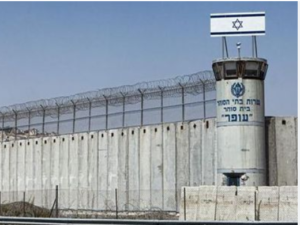THE GREATNESS OF ZAMZAM WATER
![]()
The Virtues, Characteristics and Blessings of Zamzam Water
It is the fadhl of Allah Ta’ala that he has granted us the taufeeq to commence translating and publishing the laudable work of Shaikh Saaid Bakdaash of Makkah Mukarramah titled Fadhlu Maai Zamzam or The Greatness of Zamzam Water. We have serialized the Shaikh’s book and the first part dealing with the history and names of Zamzam can be accessed from our publications. A hard copy can also be obtained from The Jamiatul Ulama Gauteng.
From the Pen of Shaikh Saaid Bakdaash
(May Allah Ta’ala protect him)
The Virtues of Zamzam Water, Its Characteristics and Blessings
Zamzam Water has numerous virtues and manifest signs. It is clearly among the good things which abound in blessings. Its benefits are wonderful and plentiful for those who drink it.
I will mention here the virtues, characteristics and blessings of Zamzam Water and whatever is narrated regarding each virtue from the Ahadeeth, Aathaar and Akhbaar in clear detail.
[Ahadeeth: Traditions of Rasoolullah
Aathaar: Reports of incidents in the lives of the Sahaabah رَضِىَ اللهُ عَنْهُمْ
Akhbaar: general reports]
Firstly, however, I will briefly enumerate the virtues—which number twenty-three—only with their titles:
1. Zamzam Water is a spring from the springs of Jannat.
2. Zamzam Water was the first fruit which Allah Ta’ala bestowed to his Khaleel, Ibraheem عَلَيْهِ السَّلاَمُ.
3. Zamzam Water is the causative factor for Makkah Mukarramah being inhabited and flourishing.
4. Zamzam Water is among the Aayaatum Bayyinaat (Manifest Signs) in the Haram of Allah.
5. Zamzam Water is among the greatest bounties and benefits witnessed in Masjidul Haraam.
6. Zamzam Water is the best water on earth.
7. Zamzam Water surfaced through the agency of Jibreel Ameen (the Trustworthy) عَلَيْهِ السَّلاَمُ.
8. Zamzam Water gushed forth onto the most sacred ground on the surface of the earth.
9. Zamzam Water was the water used to wash the heart of Mustafa on more than one occasion.
10. Zamzam is water which Rasoolullah blessed with his holy saliva.
11. Zamzam Water is food for hunger.
12. In Zamzam Water is a cure for every sickness.
13. In Zamzam Water is a cure for fever.
14. Zamzam Water alleviates headaches and gazing at it brings lustre to the eyes.[1]
15. Zamzam Water is for what it is drank for.
16. Filling oneself with Zamzam Water is a sign of Imaan and it is absolution from nifaaq (hypocrisy).
17. Zamzam Water is the drink of the Abraar [pious].
18. Gazing at Zamzam Water is Ibaadat.
19. Zamzam Water is among the best of gifts presented and amongst the best of foods served.
20. Zamzam Water never depletes regardless of the number of drawings.
21. Zamzam Water provides the body with overwhelming strength.
22. Zamzam Water is dearer to the Ulama of the Ahlul Kitaab [People of the Book; i.e. the followers of the Deen of Moosa and the Deen of Isa عَلَيْهِمَا السَّلاَمُ] than gold.
23. In the Scriptures of the Ahlul Kitaab appears: ‘One who pours Zamzam Water over his head will never suffer disgrace.’
[1] These could well be classified as separate virtues. However, in view of both being mentioned in one Hadeeth the venerable author cited them together. (Translator)
1. Zamzam Water is a Spring from the Springs of Jannah
It is narrated from Ibn Abbaas رَضِىَ اللهُ عَنْهُ that a person fell in the Zamzam Well and died. Ibn Abbaas رَضِىَ اللهُ عَنْهُsent someone to remove the person. Thereafter he said: “Empty the well of all its water.” Furthermore, he instructed the person in the well: “Place your bucket towards the spring adjacent to the Baitullah or Rukn [Hajar Aswad], for verily it is a spring from the springs of Jannah.”[1]
In the aforementioned narration Ibn Abbaas رَضِىَ اللهُ عَنْهُmade it known that the origin of Zamzam Water is Jannah. Although this narration stops at Ibn Abbaas [i.e. its chain does not extend to Rasoolullah ; such a report is termed Mowqoof in Hadeeth terminology], nonetheless, it has the same strength and ruling as a narration directly related to Nabi as its content does not hold any scope for personal opinion and individual judgement (ijtihaad).
Faakihi reports[2] from Abdah Bint Khalid Bin Ma’daan who reports from her father that he said: “It is said that Zamzam Water and the Salwaan Spring in Baitul Maqdis are from Jannah.”
Qurtubi mentioned in Al-Jaami’u Li Ahkaamil Qur’aan[3] on the authority of Abdullah Bin Amr رَضِىَ اللهُ عَنْهُwho said: “Verily there is a spring in Zamzam from Jannah. It is in the direction of the Rukn [i.e. the Hajar Aswad].”
This and the fact that Allah Ta’ala unveiled Zamzam from Jannah as succour to Isma’eel, have been corroborated by everyone who has written on Zamzam Water.
* The import of the foregoing Hadeeth [narrated by Qurtubi] is said to be borne by a Hadeeth which Imam Muslim narrated in his Saheeh.[4] The narrator is Abu Hurairah رَضِىَ اللهُ عَنْهُwho reports that Rasoolullah said:
“Ceyhan, Jeyhan,[5] the Euphrates and the Nile
are all from the rivers of Jannah.”
Imam Nawawi رَحِمَهُ اللهُ said in exposition to this Hadeeth: “As far as these rivers being from the water of Jannah is concerned, the most authentic view is that it has a literal meaning and that these rivers have some source from Jannah. Jannah furthermore is created and existing today in the view of the Ahlus Sunnah.[6]
* In the Hadeeth of Mi’raaj recorded by Imam Bukhari in his Saheeh[7], when Nabi was raised to Sidratul Muntaha he saw four rivers spouting from its root, two outward and two inward. Nabi said: “I asked: ‘O Jibreel! What rivers are these?’ He replied, ‘The two inward rivers are two rivers of Jannah and the two outward ones are the Nile and Euphrates”.
In another narration of Bukhari in his Saheeh appears:[8] “He saw in the Heaven nearest to earth two rivers flowing, whereupon Jibreel told him: ‘They are the Nile and Euphrates.” The word yattaridaan in the Hadeeth means yajriyaan [flowing].”[9]
It is proven from this Hadeeth that the source of the River Nile and Euphrates is Jannah. They spout from the root of Sidratul Muntaha flowing wherever Allah wills. Then they descend to earth and flow in it. Thereafter they emerge on earth. This is not irrational. The apparent meaning of the khabr [report] bears witness to this. It should, therefore, be considered reliable.[10]
Hafiz Ibn Hajar رَحِمَهُ اللهُ comments: “Thus he saw these two rivers together with the two rivers of Jannah at Sidratul Muntaha and then he saw the two in the Heaven closest to earth, not the two rivers of Jannah…The conclusion from this is that its [Sidratul Muntaha’s] roots are in Jannah and these two [rivers, viz. the Nile and Euphrates] emerge from its roots firstly, then they flow until they settle in the earth and then they gush forth.[11] Therefore, the source of their flow is beneath the Sidratul Muntaha and their settling point the Heaven closest to earth whence they descend to the earth.”[12]
On the basis of this, the meaning of Zamzam Water originating from Jannah is actual. Truly it descends through the qudrat of Allah and in a way Allah knows best.
* It should be noted here that the connection between Zamzam and the four rivers is simply for illustrating that Zamzam Water is from Jannah. Further than that, Zamzam possesses special characteristics and virtues which are non-existent in other waters–these [aforementioned] rivers and all others.
* The saying of Ibn Abbaas رَضِىَ اللهُ عَنْهُ that Zamzam Water is from the springs of Jannah can have a few other meanings,[13] viz.:
i. It is possible that the Hadeeth is a mere simile or hyperbole of the grand nature of this blessed water. It implies that in view of Zamzam Water’s exceptional virtue, abounding goodness, its preciousness and blessings it resembles the waters of Jannah, as if it has come down from Jannah and hence you will find that Zamzam Water is unparalleled in this world in its greatness and peculiarities. It shares certain qualities of Jannah’s waters. Hence, there is complete nutrition in it. There is cure in it. It does not run dry nor cease, and so forth, taking its many specialities into consideration.
ii. Another possible meaning is that after the destruction of this world it will be transferred to Jannah. It will therefore be honoured with presence in Jannah.
iii. It can also mean that Zamzam Water holds superiority over other waters, similar to Jannah’s superiority over the earth.
The designation of ‘being the best’ given by Nabi in his statement, “The best water on the surface of the Earth is Zamzam Water” can be understood from this concluding possibility. The said Hadeeth will be discussed at its appropriate place, Insha Allah.
[1] Musannaf Ibn Abi Shaibah, 1/162. Its sanad (chain) is authentic as stated by Imam Kamaal Ibn Humaam in ‘Fat-hul Qadeer’, 1/91. Also refer to ‘Al-Binaayah’, 1/410 and ‘As-Si’aayah’, 1/423.
[2]Akhbaaru Makkah, 2/35. Khalid Bin Ma’daan is among the leading Taabi’een, the Shaikh of the people of Shaam, reliable and an aabid (devout worshipper).
[3] 9/370. He cited the narration without a chain (sanad).
[4] Kitaabul Jannah, Baabu Maa Fid Dunya min Anhaaril Jannah, 4/2184.
[5] Jeyhan and Ceyhan are two rivers rising in south central Turkey from the Taurus Mountains to the Mediterranean. Jeyhan is the larger of the two. (Translator)
[6] Sharhu Saheehi Muslim by Nawawi, 17/177.
[7] Manaaqibul Ansaar, Baabul Mi’raaj, 7/202; Saheeh Muslim: Imaan, Baabul Israa bi Rasoolillah , 1/150.
[8] At-Tawheed: Baabu Ma Jaa-a Fi Qowlihi Ta’ala: ﴾ مُوْسى تَكْلِيْمًاﷲا وَكَلَّمَ ﴿, Part 13 Page 478.
[9] Fat-hul Baari, Part 13 Page 482.
[10] Fat-hul Baari, 7/214, citing from Nawawi. Also refer to Sharhu Saheehi Muslim, 2/225.
[11] Fat-hul Baari, Part 7 Page 214.
[12] Ibid, Part 13 Page 482.
[13] These interpretations and possibilities have been mentioned by Imam Munawi in Faidhul Qadeer, 3/408 in exposition to the Hadeeth: “Hajar-e-Aswad is from Jannah.” I have observed that these interpretations are shared by the Hadeeth: “Zamzam Water is from the springs of Jannah.” The integrating factor is that both are from Jannah.
2. Zamzam is the first fruit which Allah bestowed to His Khaleel (Alaihis Salaam)
What transpired was that when Ibraheem عَلَيْهِ وعَلى نَبِيِّنَا أَفْضَلُ الصَّلاَةِ وَالتَّسْلِيْمِ left Haajar and her son Isma’eel by the Haram, she asked, “Did Allah instruct you to do this?” He replied, “Yes,” upon which she said, “In that case He will not let us perish.” She then returned. Ibraheem السَّلاَمُ عَلَيْهِ carried on until he reached the mountain pass where they could not see him. He turned to the Baitullah and made du’aa with the following words raising his hands:
“O our Rabb! Verily I have relocated my offspring to a barren valley by Your Sanctified House, O our Rabb, for them to establish Salaah. Make then the hearts of people turn to them and grant them from fruits so that they be grateful.”[1]
Zamzam Water was thus the first of the fruits which Allah bestowed to His Khaleel, Ibraheem عَلَيْهِ السَّلاَمُ when he supplicated:
“And grant them from fruits.”
For this reason Zamzam Water is described as ‘the first’ just as the Baitul Ateeq [Ka’bah Shareef] is described as ‘the first’ since it is the first ‘home’ established for people [to worship their Rabb].[2]
3. Zamzam Water is the causative factor for Makkah Mukarramah being inhabited and flourishing
Indeed, among the virtues and blessings of Zamzam Water is that Allah Ta’ala made this blessed water the first cause for the inhabitation and growth of the city of Makkah and this resulted in the construction of the Baitul Haraam.
The valley of Makkah was barren; without water and life until Allah Ta’ala allowed Zamzam Water to surface and gush forth for Isma’eel عَلَيْهِ السَّلاَمُ as succour to him and his mother Haajar عَلَيْهِمُ السَّلاَمُ. From that day onwards Makkah became inhabited. A tribe from Yemen known as Jurhum from the Bani Qahtaan settled there for the sake of the water after seeking permission from Haajar عَلَيْهِ السَّلاَمُ to reside alongside the water. She permitted them stipulating that the only right they have in regard to the water is drink and usage. They then settled. Isma’eel عَلَيْهِ السَّلاَمُ marriage took place thereafter to a girl among them, as mentioned earlier.
[1] From Surah Ibraheem, Verse No. 37. This narrative of Ibraheem (Alaihis Salaatu wat Tasleem) appears in Saheeh Bukhari, Part 6 Page 396, as mentioned in The Story of Zamzam [Section One].
[2] Nashrul Aas by Zamzami, sheet 32/Alif, with some change; citing some of the Mashaaikh without stating their names.
————————————————————————–
This was how the Will of Allah Ta’ala materialized and Makkah was inhabited and populated. The causative factor being Zamzam. Had it not been for this blessed water none would have made it their residence.[1] Wallahu A’lam.
[1] Refer to Akhbaaru Makkah by Faakihi, 2/9; reporting from Wahb Bin Munnabih.
——————————————————————————–
3. Zamzam Water is the causative factor for Makkah Mukarramah being inhabited and flourishing
Indeed, among the virtues and blessings of Zamzam Water is that Allah Ta’ala made this blessed water the first cause for the inhabitation and growth of the city of Makkah and this resulted in the construction of the Baitul Haraam.
The valley of Makkah was barren; without water and life until Allah Ta’ala allowed Zamzam Water to surface and gush forth for Isma’eel عَلَيْهِ السَّلاَمُ as succour to him and his mother, Haajar عَلَيْهَا السَّلاَمُ. From that day onwards Makkah became inhabited. A tribe from Yemen known as Jurhum from the Bani Qahtaan settled there for the sake of the water after seeking permission from Haajar عَلَيْهَا السَّلاَمُ to reside alongside the water. She permitted them stipulating that the only right they have in regard to the water is drink and usage. They then settled. Isma’eel’s عَلَيْهِ السَّلاَمُ marriage took place thereafter to a girl among them, as mentioned earlier.
This was how the Will of Allah Ta’ala materialized and Makkah was inhabited and populated; the causative factor being Zamzam. Had it not been for this blessed water none would have made it their residence.[1] Wallahu A’lam.
4. Zamzam Water is among the Aayaat-e-Bayyinaat in the Haram Of Allah
Allah Ta’ala declares:
“Verily the first home established for people (to worship their Creator) is the one in Makkah. It is blessed and a guide to the world. In it are manifest signs – the Maqaam-e-Ibraheem – and whoever enters it (the Haram), is safe.”
Imam Faqeeh Muhaddith Muhammad Bin Umar, popularly known as ‘Bahraq’, said: “Among the clear and manifest signs in Haram are: The Hajar-e-Aswad, the Hateem, the flowing of Zamzam Water by the heel of Jibreel عَلَيْهِ السَّلاَمُ and drinking it as a cure for sicknesses and nutrition for the body in a way that obviates the need for water and food.[2]
5. Zamzam Water is among the greatest bounties and benefits witnessed at the Baitul Haraam
Allah Ta’ala says:
“And proclaim the Haj to people. They will come to you by foot and on lean camels from distant and remote routes to witness benefits for them and to take the name of Allah on specific days.”
Among the greatest of these magnificent bounties which the Hujjaaj and those performing Umrah witness in the Haram of Allah are the benefits of Zamzam Water. They drink and become filled. They obtain its goodness and blessings. They earn accepted du’aas when drinking it. Zamzam Water is for what it is drank for – needs pertaining to this world and the Hereafter. It is, therefore, truly among the great bounties of Allah which Allah Ta’ala has kept for the Mu’mineen in this pure and blessed place by His Sacred House.
Among the most conspicuous virtues which reveal the magnificence of this bounty and the proportion of this benefit of Zamzam Water is the characteristic of seeking health through the medium of it. How many an ailing person recovered by just being by it, by drinking it and by bathing with it in spite of exhausting all attempts seeking a cure through other means![3]
In fact, out there are countless of patients whom Allah honoured with cure through the barkat of Zamzam Water. They were suffering from mystifying sicknesses which rendered the medical association and the philosophy of philosophers helpless.
Zamzam Water is thus, a splendid gateway which Allah Ta’ala has opened for his Believing Servants and honoured them with. May Allah reward on our behalf our Nabi Sayyidina Muhammad the best of rewards for showing this Ummah this all-pervasive goodness and stating to us its virtues and blessings.
[1] Refer to Akhbaaru Makkah by Faakihi, 2/9; reporting from Wahb Bin Munabbih.
[2] Tabsiratul Hadhratil Ahmadiyyah Ash-Shaahiyyah bi Seeratil Ahmadiyyah An-Nabawiyyah, 1/83, Ansaari print and p.81 Darul Haawi Print. Imam Qurtubi also recognized Zamzam to be among the Aayaat-e-Bayyinaat, Al-Jaami’u li Ahkaamil Qur’aan, 4/139 and, similarly, other Mufassireen.
Note: The aforementioned Seerah Kitaab has been printed by Shaikh Abdullah Ansaari Qatari in 3 volumes with another title and ascribed to some other author. He named it, “Hadaaiqul Anwaar wa Mataali’ul Asraar fi Seeratin Nabiyyil Mukhtaar” and ascribed it to Imam Ibnud Deeba’ Shaibaani. However, the correct title and name of the author is what I have documented here relying on the print emanating from Darul Haawi, Beirut and researched by Muhammad Ghassaan Azqool in a single volume, the year 1419 Hijri. This is evident from the introduction of the author. It is odd that the new printers title the kitaab erroneously, ‘Hadaaiqul Anwaar’, and thereunder write: “Known as ‘Tabsiratul Hadhrat…”!
[3] Thimaarul Quloob fil Mudhaafi wal Mansoob by Tha’aalabi (d.429), p.559.



